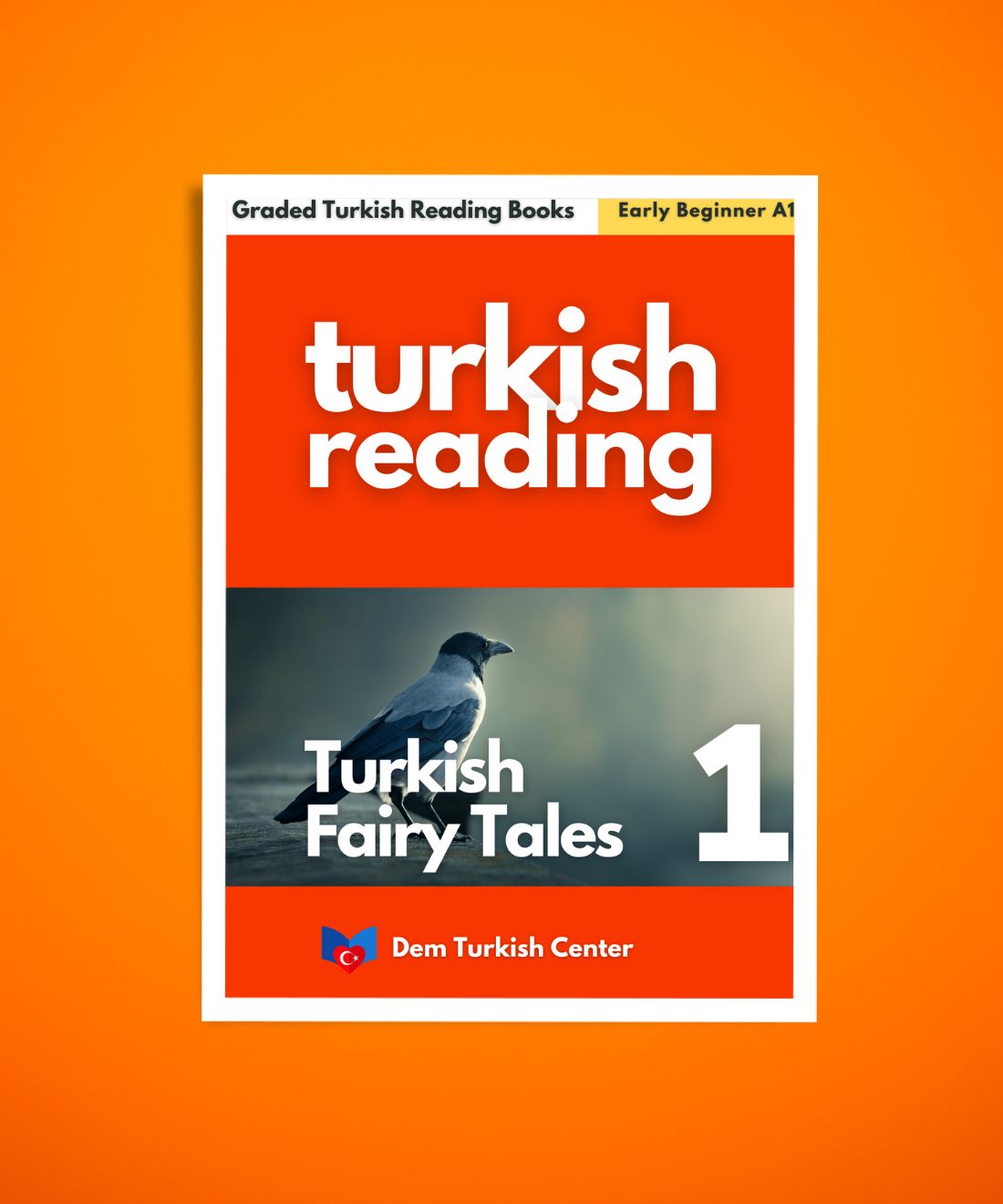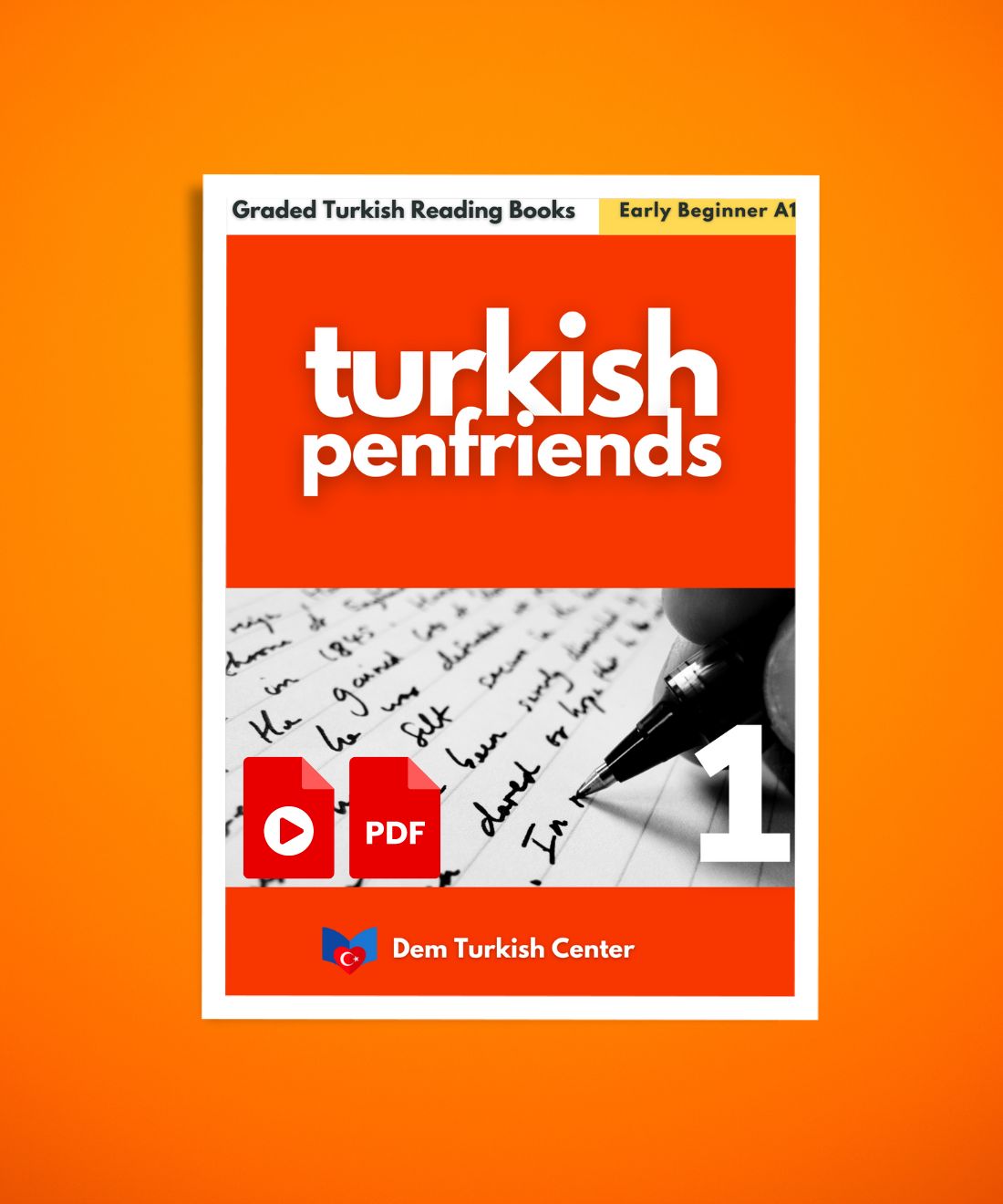
How to improve your Turkish reading skill: 10 Top Tips
Improving your Turkish reading skills requires a systematic approach tailored to your proficiency level. Here's a detailed guide:
10 Tips For Improving Your Turkish reading Skill
1. Build Your Turkish Vocabulary
- Start with Common Words Focus on high-frequency Turkish words used in daily conversations and texts. For example: Greetings (merhaba, günaydın), common verbs (yemek - to eat, gitmek - to go), and connectors (ve - and, ama - but).
- Use Flashcards Apps like Anki or Quizlet can help you memorize Turkish vocabulary. Include examples in sentences for context.
- Learn Word Families Turkish uses agglutination, so learn root words and suffixes. For example: Ev (house) → evim (my house) → evinizden (from your house).
- Thematic Lists Study words by themes (e.g., food, transportation, emotions).
Learn 60 Turkish collocations (nouns + verbs)!
Learn 50 most common Turkish adverbs!
Learn 100 most common Turkish adjectives!
2. Understand Turkish Grammar
- Learn Sentence Structure Turkish uses a Subject-Object-Verb (SOV) structure. For instance: "Ben kitap okuyorum. (I am reading a book.)
- Master Suffixes Turkish relies heavily on suffixes to indicate tense, possession, plurality, and more. For example: kitap (book), kitaplar (books), kitabım (my book).
- Focus on Vowel Harmony Turkish vowels follow harmony rules, which determine suffix changes. For example: Evde (in the house), arabada (in the car).
Download Turkish Grammar Course 1 A1!
Download Turkish Grammar Course 2 A2!
3. Start with Simple Texts
- Children’s Books Begin with children’s books for basic vocabulary and straightforward sentence structures. For example: Books by Sevim Ak or translated fairy tales like Kırmızı Başlıklı Kız (Little Red Riding Hood).
- Graded Readers Find books tailored to language learners. They are simplified for different proficiency levels.
- Newspapers with Easy Turkish Websites like BBC Türkçe or Anadolu Ajansı have simplified news for learners.
Download Turkish Reading Practice Course 1 A1!
4. Read Aloud
- Improves Pronunciation Reading aloud helps reinforce vocabulary and proper intonation.
- Break Down Sentences Start by identifying the subject, verb, and object. For example: Bugün hava çok güzel. (Today, the weather is very nice.)
- Record Yourself Listen to your pronunciation and compare it to native speakers.
Download Turkish Reading Practice Course 2 A2!
5. Use Audio-Visual Aids
- Subtitled Videos Watch Turkish TV shows, movies, or YouTube channels with subtitles.
- Audiobooks and E-books Follow along with an audiobook while reading the text. Platforms like Audible or Tantuni Kitap offer Turkish audiobooks.
- Language Learning Apps Apps like LingQ provides texts with audio for contextual learning.
Download Turkish Reading Practice Course 3 PI (Pre-intermediate)!
6. Practice with Short Articles
- News and Magazines Read short, simple articles on topics of interest. Focus on sections like sports, lifestyle, or entertainment.
- Blogs Look for blogs in Turkish about hobbies you enjoy (e.g., cooking, travel).
- Social Media Follow Turkish accounts on Instagram or Twitter to read short posts daily.
Download Turkish Reading Practice Course 4 B1!
7. Develop Comprehension Skills
- Use Context Clues Don’t translate every word. Guess the meaning of unfamiliar words from context.
- Highlight and Note Mark unknown words and look them up later. Write them in a vocabulary notebook.
- Ask Questions While reading, ask "What is the main idea? What are the key details?"
- Summarize After reading, summarize the text in Turkish to ensure understanding.
8. Join Reading Communities
- Online Groups Join forums or social media groups for Turkish learners to discuss texts.
- Book Clubs Participate in a Turkish book club, either online or locally.
- Language Exchange Partners Partner with a native Turkish speaker to read and discuss texts together.
9. Use Technology
- Reading Apps Apps like Duolingo Stories, Beelinguapp, and Tandem offer reading practice.
- Translation Tools Use tools like Google Translate for occasional help, but avoid over-reliance.
- E-Readers Kindle or similar devices often include Turkish-English dictionaries for easy lookup.
10. Be Consistent
- Set Daily Goals Read for 10–15 minutes every day.
- Track Progress Keep a journal of new words and texts you’ve read.
- Reward Yourself Celebrate milestones like finishing a book or learning 100 new words.
Suggested Progression:
- Beginner Start with children’s books, simple dialogues, and vocabulary lists.
- Intermediate
- Advanced Read novels, newspapers, academic articles, and poetry.
Tags:













